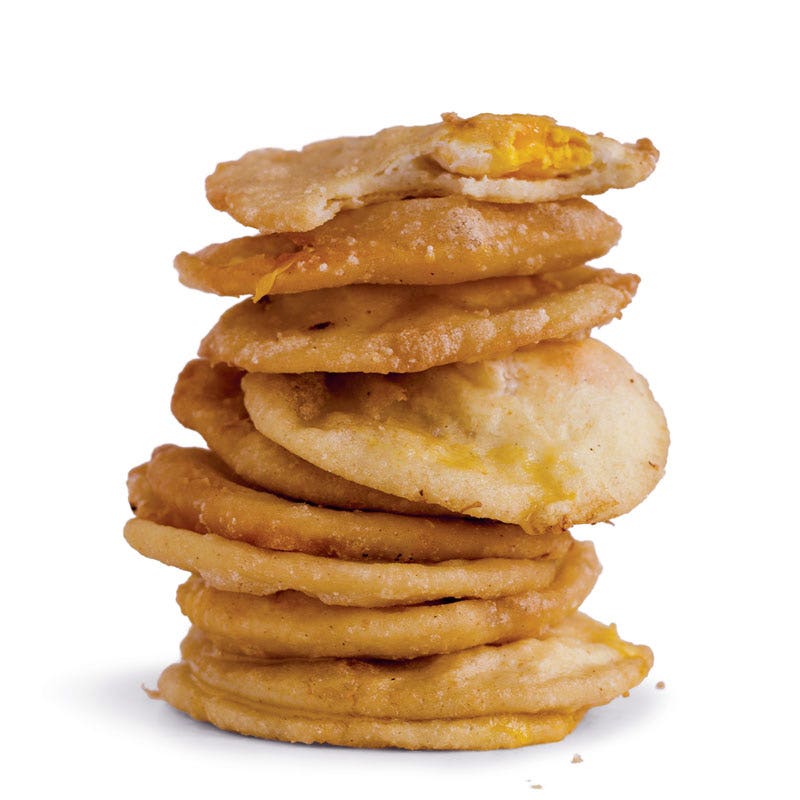
Ana Tulia Gómez Peña, 69, stands on the patio of her home in Cartagena, Colombia, shaping dough between her palms to make one of the city's most beloved foods: arepas de huevo, fried cakes of corn masa stuffed with soft-cooked eggs. She flattens each disk, then slips it into a vat of hot oil, where it sizzles and puffs. Using a wire skimmer, she deftly pulls it from the fryer, slices it along the side, and drops in a raw egg. She fries the patty again, and then hands it to me. I take a bite. The arepa has a light crunch at the edges that gives way to a fluffy interior. The egg within is perfect—the whites set, the yolk soft and golden. I devour it with a dollop of hot sauce.
Arepas are an essential Colombian snack—one that dates to precolonial times. They are found across the country in all sorts of styles, from the antioqueña, a simple griddled patty of ground white corn and water, to the santandereana, a hearty yellow corn cake filled with pork rinds and cheese. But Cartagena, the colonial city on Colombia's coast, is known specifically for its egg-stuffed version, of which Gómez Peña is the undisputed master. For 29 years in a row, her arepas took first place in the Festival del Frito de Cartagena, a popular fried food festival. (In recent years she's sat out to give others a chance to win.)
Born to a family of modest means in San Antonio, three hours from Cartagena, Gómez Peña learned to make arepas de huevo by watching her grandmother and her padrinos, or landlords, make them. Today, having bought a house and sent three children to university with her earnings, Gómez Peña sells them from her patio for 1,500 pesos (about 80 cents) a piece. Her arepas have made her a local legend. "When I'm not here," she says, "everyone comes and asks, 'Where's Ana?'"
Keep Reading
Continue to Next Story










